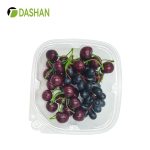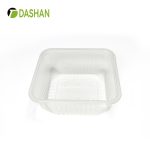📌 Quick Summary
This blog explores the U.S. perspective on PLA Food Packaging, from coffee shops using PLA cups to restaurants adopting PLA boxes and PLA lids. While consumers appreciate its eco-friendly and compostable image, challenges such as limited composting facilities, higher costs, and consumer confusion remain. The article also examines case studies from Starbucks, Whole Foods, and independent cafés, highlighting how PLA packaging supports sustainability goals. Overall, PLA Food Packaging is reshaping U.S. foodservice trends by aligning with green consumer values and regulatory shifts.
Introduction
The conversation around sustainability in the United States has reached unprecedented levels, especially in the food packaging industry. Among the many emerging materials, PLA Food Packaging (Polylactic Acid packaging) has become one of the most discussed topics in both regulatory and commercial spaces. From PLA cups in coffee shops to PLA boxes in fast-casual restaurants and PLA lids in takeaway services, this material is increasingly visible.
But what does the U.S. market really think about PLA Food Packaging? Is it just a trend, or is it becoming a permanent part of America’s sustainable foodservice landscape?
This blog will explore the applications, consumer perception, regulatory context, business adoption, and long-term potential of PLA Food Packaging in the United States, highlighting its advantages, limitations, and future opportunities.
What is PLA Food Packaging?
PLA (Polylactic Acid) is a biodegradable, plant-based polymer derived primarily from renewable resources such as corn starch or sugarcane. Unlike traditional plastics such as PET or PP, PLA Food Packaging is designed with compostability in mind.
Products include:
-
PLA cups for iced beverages, smoothies, and cold brew coffee
-
PLA boxes for salads, baked goods, and takeout meals
-
PLA lids for cups, bowls, and food containers
The appeal lies in its sustainable image: PLA packaging is marketed as both eco-friendly and compostable packaging, giving consumers and businesses an alternative to petroleum-based plastics.
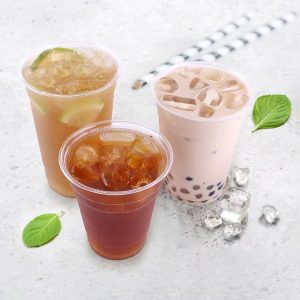
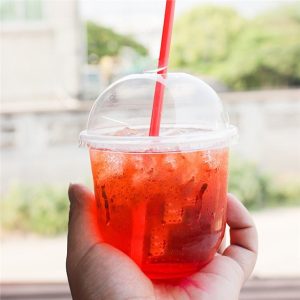
Why the U.S. Market is Interested in PLA Food Packaging
1. Rising Demand for Sustainability
American consumers, especially younger generations, are increasingly seeking out biodegradable food containers and compostable packaging options. Surveys show that more than 70% of Millennials and Gen Z customers are willing to pay more for foodservice items that come in sustainable packaging.
PLA Food Packaging directly aligns with these consumer values, making it attractive for cafés, restaurants, and grocery chains.
2. Government and Regulatory Influence
In several U.S. states, bans on single-use plastics are accelerating the adoption of PLA packaging. Cities like Seattle, San Francisco, and New York have strict rules around styrofoam and non-recyclable plastics. PLA cups and PLA lids offer foodservice businesses a compliant alternative.
3. Branding and Green Image
For many U.S. coffee chains and foodservice outlets, using PLA Food Packaging is not just about compliance—it’s also about branding. Printing a company logo on a PLA cup or promoting compostable boxes sends a clear message to eco-conscious customers: “We care about the planet.”
Applications of PLA Food Packaging in the U.S.
PLA Cups in Coffee Shops
Coffee culture is deeply embedded in the United States. From Starbucks to independent cafés, beverage packaging is a critical part of daily operations. PLA cups are increasingly being used for iced lattes, smoothies, bubble tea, and cold brew. Many shops highlight the “compostable” label on these cups as a selling point.
PLA Boxes for Takeout and Delivery
With the growth of delivery apps like Uber Eats and DoorDash, the demand for sturdy, eco-friendly food containers has soared. Restaurants are adopting PLA boxes for salads, sandwiches, desserts, and even hot meals (though PLA has temperature limitations).
PLA Lids for Containers
Lids are often overlooked, but they play a huge role in consumer satisfaction. PLA lids fit seamlessly onto cups and bowls, giving a polished, professional look. They are particularly popular in juice bars and healthy fast-casual restaurants.
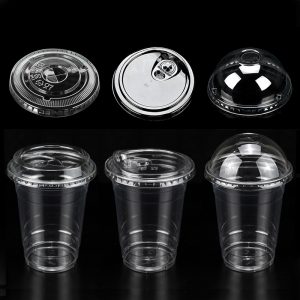
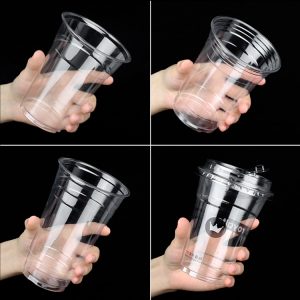
Advantages of PLA Food Packaging
-
Renewable Resources – Unlike petroleum-based plastics, PLA packaging is made from plants, reducing reliance on fossil fuels.
-
Eco-Friendly Image – Consumers view PLA cups and PLA boxes as “better for the environment,” enhancing brand perception.
-
Compostability – In commercial composting facilities, PLA Food Packaging can break down into organic matter within months.
-
Regulatory Compliance – Many U.S. states accept PLA packaging as a legal alternative to banned single-use plastics.
-
Customizable Design – Businesses can brand PLA cups and lids with logos, making them both sustainable and marketable.
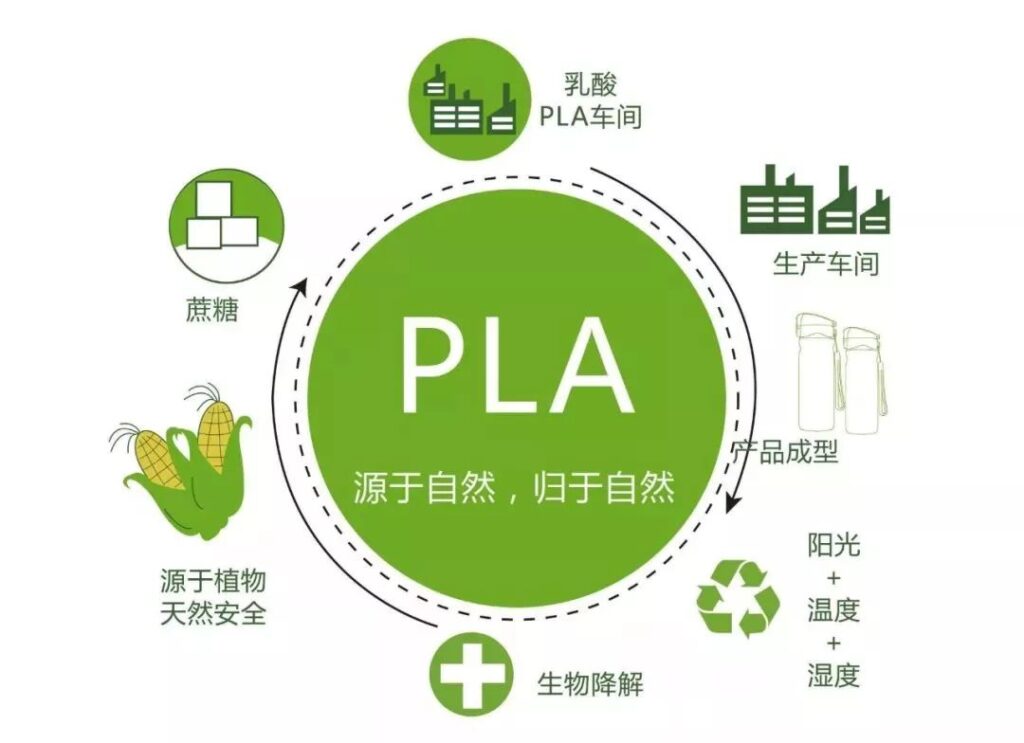
Challenges and Criticisms of PLA Food Packaging
Despite its popularity, PLA packaging faces several challenges in the U.S.:
-
Limited Composting Facilities – Only a fraction of American cities have the infrastructure to compost PLA. Without proper disposal, PLA cups and lids often end up in landfills.
-
Temperature Sensitivity – PLA food containers cannot handle very high heat, making them unsuitable for hot soups or oven use.
-
Consumer Confusion – Many people assume PLA packaging is recyclable, which it is not. This leads to contamination in recycling streams.
-
Higher Cost – PLA boxes and cups are more expensive than traditional plastic, making them harder for small businesses to adopt widely.
Case Studies: U.S. Businesses Using PLA Food Packaging
Starbucks
Starbucks has piloted PLA cups in several regions as part of its goal to reduce single-use plastic waste. While the company faces challenges with composting logistics, the move signals growing corporate confidence in PLA packaging.
Whole Foods Market
Known for its eco-friendly branding, Whole Foods has tested PLA lids and containers for deli and bakery items. By highlighting “compostable packaging” on signage, they educate consumers while reinforcing their green image.
Independent Cafés
Smaller coffee shops and juice bars often use PLA cups as a differentiator. By offering “plant-based cups,” they attract eco-conscious customers who prefer businesses aligned with sustainability values.
The Future of PLA Food Packaging in the U.S.
Industry experts predict steady growth for PLA packaging in the next decade, especially in urban areas with composting infrastructure. However, for PLA to truly redefine U.S. food packaging, several improvements are needed:
-
Expansion of Composting Facilities – Without infrastructure, the compostability advantage of PLA cups and boxes is wasted.
-
Clearer Labeling – Standardized “compostable” labels will help prevent confusion with recycling.
-
Lower Production Costs – As demand scales up, PLA packaging could become more affordable for small businesses.
-
Integration with Circular Economy – Combining PLA food containers with broader waste reduction strategies (like reusable packaging systems) will maximize their impact.
Conclusion
PLA Food Packaging has carved out a unique position in the U.S. foodservice market. From PLA cups in coffee shops to PLA lids and boxes for takeout, this material is reshaping how Americans think about sustainable food packaging.
While challenges remain—especially in composting infrastructure and cost—the trend is clear: PLA packaging is more than a passing fad. It represents a growing shift in U.S. consumer values, corporate responsibility, and environmental policy.
For businesses, adopting PLA Food Packaging is not only about reducing plastic waste—it’s also about staying ahead in a market where sustainability increasingly drives consumer choices.
References
-
PlasticsEurope. (2024). Plastics – the Facts 2024: An analysis of European plastics production, demand, and waste data. Retrieved from: https://plasticseurope.org
-
Ellen MacArthur Foundation. (2023). Global Commitment 2023 Progress Report. Retrieved from: https://ellenmacarthurfoundation.org
-
European Commission. (2022). Directive (EU) 2019/904 on the reduction of the impact of certain plastic products on the environment. Retrieved from: https://ec.europa.eu
-
U.S. Environmental Protection Agency (EPA). (2023). National Overview: Facts and Figures on Materials, Wastes and Recycling. Retrieved from: https://www.epa.gov/facts-and-figures-about-materials-waste-and-recycling
-
World Wildlife Fund (WWF). (2023). No Plastic in Nature: Assessing Plastic Ingestion from Nature to People. Retrieved from: https://www.worldwildlife.org

